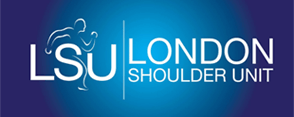Shoulder
Normal Anatomy of the Shoulder Joint
The shoulder is the most flexible joint in the body making it the most susceptible to instability and injury. It is a ‘ball-and-socket’ joint. A ‘ball’ at the top of the upper arm bone, humerus, fits neatly into a ‘socket’, called the glenoid, which is part of the shoulder blade, scapula.
For more information about Normal Anatomy of the Shoulder Joint, click on below tabs.
Conditions
Shoulder Instability
Coming soon
For more information about Shoulder Instability, click on below tab.
Rotator Cuff Tear
The rotator cuff is a group of tendons in the shoulder joint that cover and provide support to the shoulder joint, enabling wider range of motion. A tear in the rotator cuff is one of the most common causes of shoulder pain in middle aged adults and older individuals. It may occur with repetitive movements while working or playing sports, during motor accidents, lifting a heavy object or a fall on an outstretched arm. As aging occurs, bone spurs may develop and can damage tendon tissue causing tears.
For more information about Rotator Cuff Tear, click on below tabs.
Frozen Shoulder
Frozen shoulder is a painful shoulder condition that limits movement and causes stiffness in the joint. It is also called adhesive capsulitis and may progress to the state where you may find it very hard to move your arm. Frozen shoulder is more common in older adults between 40 and 60 years, and occurs more often in women than men.
For more information about Frozen Shoulder, click on below tabs.
Shoulder Impingement
Shoulder impingement is the condition of inflammation of the tendons of the shoulder joint. It is one of the most common causes of pain in the adult shoulder. The shoulder is a ‘ball-and-socket’ joint. A ‘ball’ at the top of the upper arm bone, humerus, fits neatly into a ‘socket’, called the glenoid, which is part of the shoulder blade, scapula. Shoulder impingement is also called as swimmer’s shoulder, tennis shoulder, or rotator cuff tendinitis.
For more information about Shoulder Impingement, click on below tabs.
Clavicle Fracture
Clavicle fracture or broken collarbone is a very common injury associated with contact sports such as football and martial arts, as well as impact sports such as motor racing. A direct blow over the shoulder, fall on an outstretched arm or motor vehicle accident may also cause the clavicle bone to break. A broken clavicle causes difficulty in lifting your arm because of pain, swelling and bruising.
For more information about Clavicle Fracture, click on below tabs.
Procedures
Shoulder Arthroscopy
Arthroscopy is a minimally invasive diagnostic and surgical procedure performed for joint problems. Shoulder arthroscopy is performed using a pencil-sized instrument called an arthroscope. The arthroscope consists of a light system and camera to project images to a computer screen for your surgeon to view the surgical site. Arthroscopy is used to treat disease conditions and injuries involving the bones, cartilage, tendons, ligaments, and muscles of the shoulder joint.
For more information about Shoulder Arthroscopy, click on below tabs.
Anterior Stabilisation
The shoulder consists of 3 bones (humerus, scapula and clavicle) which together form a ball and socket joint and help in the flexible movement of the shoulder. The shoulder is supported and stabilized by strong muscles, ligaments and a rim of cartilage tissue called the labrum. Falls and other traumatic injuries to the shoulder can dislocate (displace) the ball of the humerus (upper arm bone) out of the socket of the shoulder joint forward and cause a tear in the labrum. This condition is called a bankart lesion. Anterior stabilisation aims to restore your shoulder stability and prevent future dislocations.
For more information about Anterior Stabilisation, click on below tab.
Posterior Stabilisation
The shoulder consists of 3 bones (humerus, scapula and clavicle), which together form a ball and socket joint and help in the flexible movement of the shoulder. The shoulder is supported and stabilized by strong muscles, ligaments and a rim of cartilage tissue called the labrum. Falls and other traumatic injuries to the shoulder can dislocate (displace) the ball of the humerus (upper arm bone) out of the socket of the shoulder joint backwards and cause a tear in the labrum. Posterior stabilisation surgery aims to restore your shoulder stability and prevent future dislocations.
For more information about Posterior Stabilisation, click on below tab.
Shoulder Joint Replacement
Shoulder joint replacement is a surgical procedure performed to replace a damaged shoulder joint with artificial implants. It is usually performed to relieve shoulder pain when the joint is severely damaged by osteoarthritis, rheumatoid arthritis, post-traumatic arthritis, rotator cuff tear arthropathy, avascular necrosis (tissue death), fracture and failed former shoulder replacement surgery.
For more information about Shoulder Joint Replacement, click on below tabs.
Reverse Shoulder replacement
Reverse Total Shoulder Arthroplasty is a type of shoulder joint replacement surgery which addresses not only glenohumeral arthritis, but also shoulder instability. With a traditional Total Shoulder Replacement or arthroplasty, the arthritic surfaces of the glenohumeral joint are smoothed and a prosthetic cup is placed in the glenoid or shoulder socket and a prosthetic ball is inserted into the end of the humerus or arm bone to replace the “ball and socket” joint. This type of surgery is very successful at relieving arthritic pain in patients who have intact rotator cuff tendons and other soft tissue structures to support the new prosthetics and provide good range of motion.
For more information about Reverse Shoulder replacement, click on below tab.







